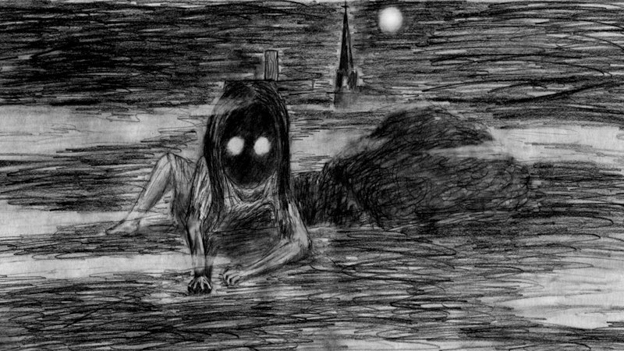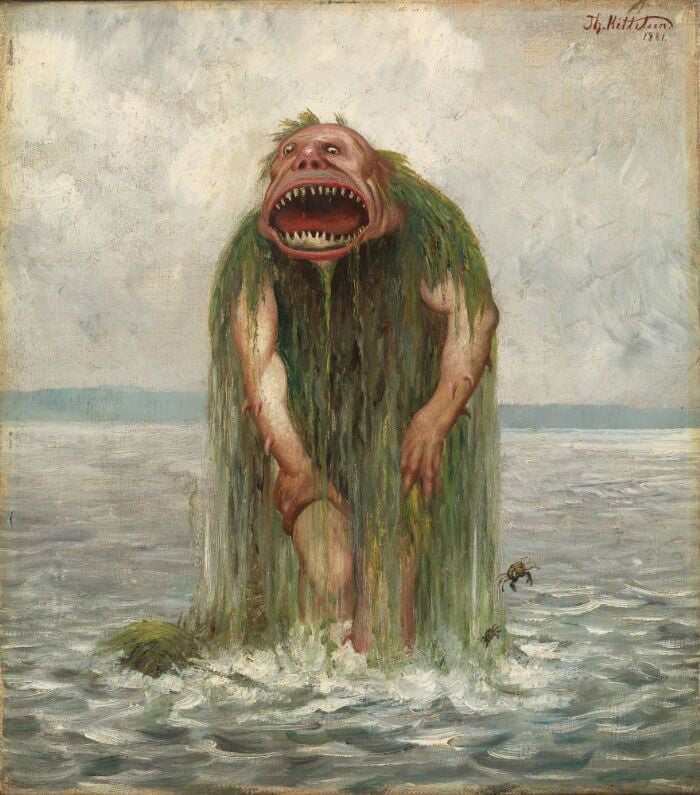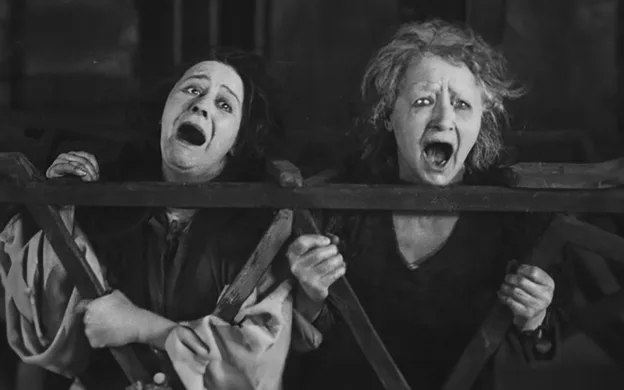Every culture has its own relationship to death and superstition. Ghost stories are usually a part of that; what they focus on are a macabre, gateway to understanding the fears and obsessions of that time and people through mythological creatures.
My personal favorite periods of ghost folklore are Victorian England, largely because those people were so repressed that they managed to mix sex and death in a way previously unheard of, and the American West, because then you get whole towns of ghosts! I’m nothing if not economical.
Folklore in the Scandinavian region experienced a surge of interest in the late 19th century, with those cultures beginning to look beyond their histories of Christianity and back to their mythological roots.
Many of the Scandinavian folk stories, as is so common worldwide and can also be seen in fairy tales, were created to scare children into obeying their parents. Others satires of norse monsters grew and changed as a way to explain phenomena that seemed otherwise inexplicable.
In honor of Halloween, which in recent years has become semi-celebrated in the Nordic countries, here are the creatures and creepies of the region:
 Myling: Scandinavian folklore ‘s child ghost
Myling: Scandinavian folklore ‘s child ghost
Definitely the most disturbing of the ghost stories, Myling narratives tell the story of unwanted or murdered children. Sometimes the ghosts are also referred to as utburd, meaning “that which is outside.”

The ghosts of these children long to be buried properly, so they jump on the back of the first person they meet and demand to be taken to a cemetery. In some stories, the Myling ghost drains power from its human ride. In others, the human is too weak and dies from the exertion.
The ghost often takes on human form as it gets closer to the burial ground and is described, though it represents a child, as a very large spirit.
These stories are believed to have been written to respond to instances of infanticide; a taboo subject.
Sorry to bum you all out with that one.
 Draugen: The sea ghost of Scandi sailors
Draugen: The sea ghost of Scandi sailors
The ghost of a man who died at sea, Draugen has many stories to his name. In one iteration, a man ran from the ghost, calling out to the dead to save him. The next day, the cemetery was covered in seaweed and the graves were wide open.
Huge, draped in seaweed and screaming (just like my wedding day), many claim to see Draugen during storms.
He sinks boats and drowns sailors. So, not a great guy.

 Pesta: Scandinavian folklore ‘s plague ghost
Pesta: Scandinavian folklore ‘s plague ghost
Beginning during the time of the Black Death, Pesta is the personification of the plague.
As the legend goes, if she comes to your house with a rake, some of the family may live. But if she comes with a broom, you’re all doomed.
She is usually described as an ugly, shriveled old woman. Pesta, also called “Plague-hag,” is still sometimes mentioned in connection with death in Northern Europe.

 Mare: Scandinavian folklore’s sea monster
Mare: Scandinavian folklore’s sea monster
She’s not really a ghost, but she is pretty terrifying. This evil spirit or goblin sits on you and gives you bad dreams (or night-mares! Aha!).
Stories about her can be traced back to the 13th century, when King Vanlandi Sveigðisson of Uppsala died during a nightmare.
It was said that his wife, whom he had abandoned ten years previous, asked a sorceress to use his dreams to lure him back to her or, failing that, kill him.

Have a ghost story you want to share, Scandinavian or not? We love a good ghost story! Shoot us an email at hello[@]scandinaviastandard.com
This article was originally published in October, 2014.

